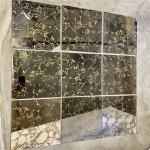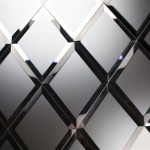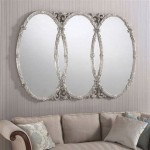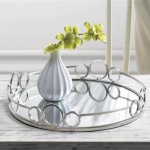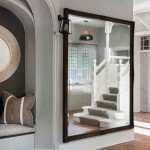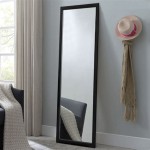Can Convex Mirrors Form Inverted Images?
Convex mirrors are known for their ability to produce virtual, upright, and diminished images. This characteristic makes them useful in a variety of applications, from security mirrors in stores to side-view mirrors in vehicles. However, the question of whether a convex mirror can ever form an inverted image arises. The answer, under typical circumstances, is no. This article explores the fundamental principles of image formation in convex mirrors to explain why inversion is not possible with these optical devices.
Image Formation in Convex Mirrors
Convex mirrors are curved outward, reflecting light rays away from their principal axis. This divergence of reflected rays is the key to understanding why they produce the images they do. When parallel rays of light strike a convex mirror, they reflect in a manner that makes them appear to originate from a single point behind the mirror. This point is known as the virtual focal point. The image formed by a convex mirror is always located between the pole (center of the mirror's surface) and the virtual focal point.
To understand image formation, consider an object placed in front of a convex mirror. Rays of light emanating from the object strike the mirror's surface and reflect according to the laws of reflection. By tracing the paths of these reflected rays, one can determine the location and characteristics of the image. Crucially, the reflected rays always diverge, never converging in front of the mirror. The image is thus formed by extending these diverging rays backward, where they appear to intersect. This intersection point lies behind the mirror, making the image virtual. Because the image forms from the backward extension of diverging rays and stays within the specified region between the pole and the virtual focal point, it will always be upright and smaller than the object.
Why Inversion Doesn't Occur
Image inversion occurs when the rays of light from an object cross over after reflection or refraction. In concave mirrors and converging lenses, this crossover point exists in front of the optical device, allowing for the formation of a real inverted image. However, in convex mirrors, the reflected rays diverge, preventing such a crossover. Since the rays never converge in front of the mirror, an inverted image cannot form. The image remains upright because the reflected rays maintain their relative positions above or below the principal axis after reflection. The top of the object remains associated with rays reflected above the principal axis, and the bottom remains associated with rays reflected below.
The Role of Diverging Rays
The diverging nature of the reflected rays from a convex mirror is the fundamental reason why inversion is impossible. This divergence ensures that the image formed is always virtual, upright, and diminished. These characteristics are inherent to the geometry of the convex surface and the laws of reflection. No matter the distance of the object from the mirror, the reflected rays will always diverge, precluding the formation of an inverted image.
Practical Implications
The inability of convex mirrors to form inverted images contributes significantly to their practical applications. The wide field of view provided by convex mirrors, coupled with the upright and diminished image, makes them ideal for enhancing visibility in various settings. For example, in vehicle side-view mirrors, the wide field of view allows drivers to see a larger portion of the area behind and to the side of the vehicle. The diminished image allows a larger scene to be compressed into the mirror's smaller reflecting surface, providing a comprehensive view of the surroundings. Similarly, in security mirrors used in stores, the wide field of view helps monitor a larger area of the store, deterring theft and enhancing security.
The Virtual Nature of the Image
The image formed by a convex mirror is always virtual. This means that the image cannot be projected onto a screen. A virtual image is formed by the apparent intersection of light rays, not by the actual convergence of light. This is in contrast to a real image, which is formed by the actual convergence of light rays and can be projected onto a screen. The virtual nature of the image further reinforces the impossibility of inversion in convex mirrors, as a real image is a prerequisite for inversion to occur.
Distinguishing Convex Mirrors from Concave Mirrors
Understanding the difference between convex and concave mirrors is crucial for grasping why image inversion is possible in one but not the other. Concave mirrors curve inward, causing reflected rays to converge. This convergence allows for the formation of both real and virtual images, depending on the object's distance from the mirror. When the object is placed beyond the focal point of a concave mirror, a real, inverted image forms. In contrast, when the object is placed within the focal point, a virtual, upright, and magnified image is formed. This ability to form real images is a key distinction between concave and convex mirrors, and it underlies the capacity for image inversion in concave mirrors but not in convex mirrors.
Does A Convex Mirror Form Real And Inverted Image Quora
Can Convex Mirrors Produce Lateral Inversion Quora
Can A Convex Mirror Form Magnified Image Quora

Can Convex Mirrors Ever Produce Real Images Inverted Magnified Quora
Can Convex Mirrors Ever Produce Real Images Inverted Magnified Quora

What Would You Use To Obtain A Real And Inverted Image For Any Position Of An Object Convex Mirror Or Concave Lens B C
Can A Convex Mirror Produce Real Image When The Object Is Virtual And Vice Versa Concave If Yes How Will It Be Possible Why Quora
Can Convex Mirrors Produce Lateral Inversion Quora
Does The Convex Lens Have An Upright Or Upside Down Image Quora
Can Convex Mirrors Ever Produce Real Images Inverted Magnified Quora

